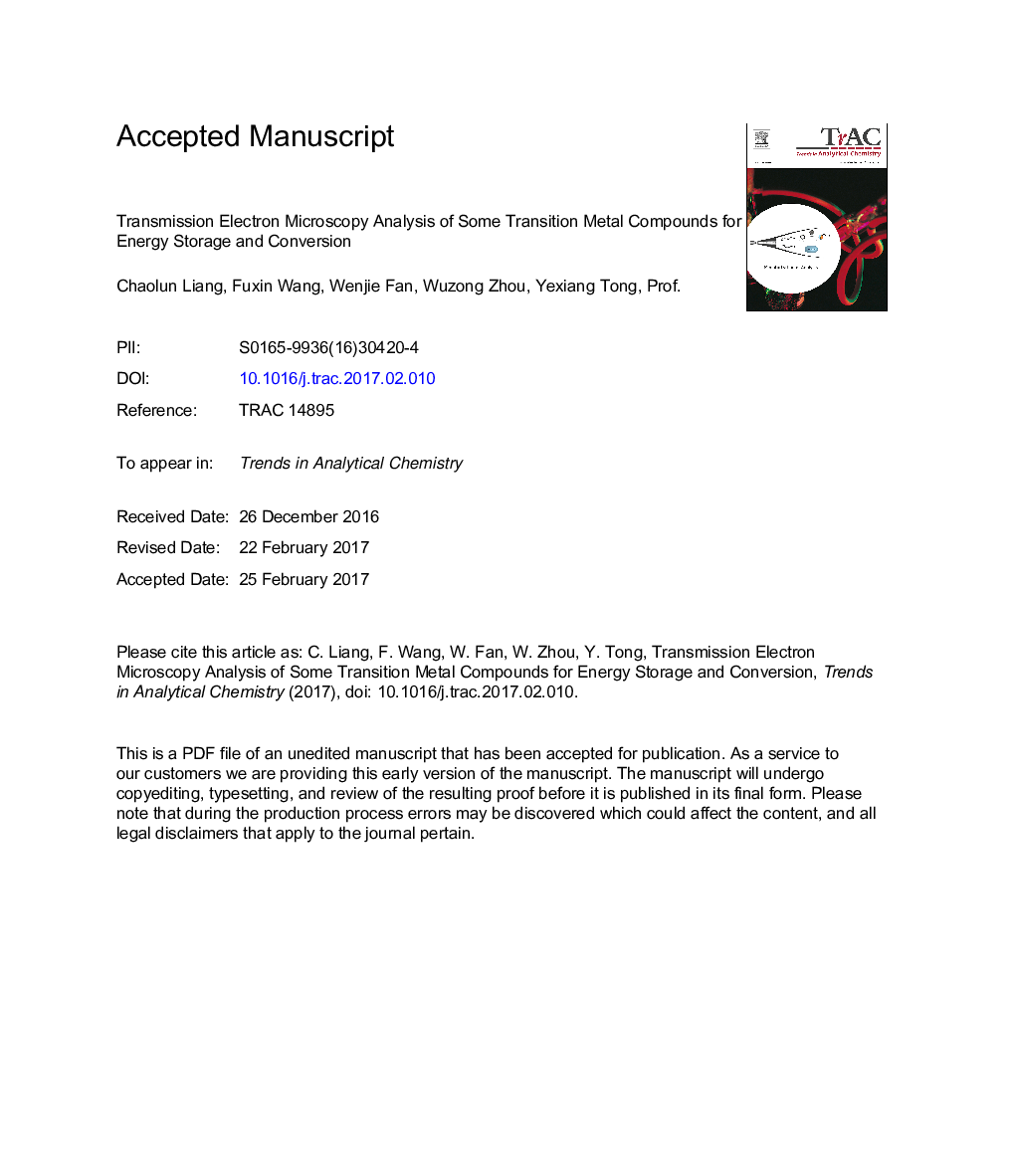| Article ID | Journal | Published Year | Pages | File Type |
|---|---|---|---|---|
| 5141618 | TrAC Trends in Analytical Chemistry | 2017 | 54 Pages |
Abstract
Recently, transition metal compounds (TMCs) have been employed as high-performance electrode materials for lithium ion batteries (LIBs) and supercapacitors (SCs) owing to their high specific capacities, high electrical conductivity, and high chemical and thermal stability. While the characterization of electrochemical properties of TMC anodes is well developed, new challenges arise in understanding the structure-property relationships. Transmission electron microscopy (TEM) is a powerful tool for studying microstructural characteristics. With TEM and related techniques, fundamental understanding of how the microstructures affect the properties of the TMC nanostructured anodes can be improved. In this article, the application of TEM in characterization of some typical TMC anode materials optimized through structural engineering, elemental doping, surface modification, defect-control engineering, morphological control, etc. is reviewed. Emphasis is given on analyzing the microstructures, including surface structures, various defects, local chemical compositions and valence states of transition metals, aimed at illustrating a structure-property relationship. The contribution and future development of the TEM techniques to elucidation of the electrochemical properties of the TMC anodes are highlighted.
Keywords
Related Topics
Physical Sciences and Engineering
Chemistry
Analytical Chemistry
Authors
Chaolun Liang, Fuxin Wang, Wenjie Fan, Wuzong Zhou, Yexiang Tong,
